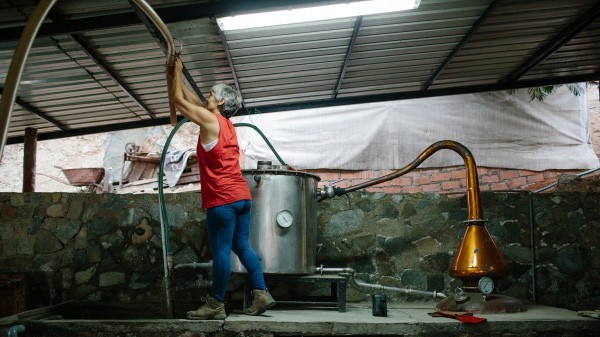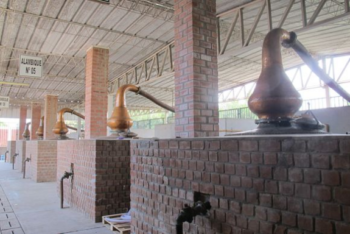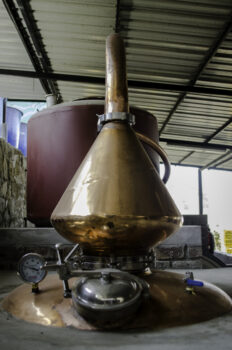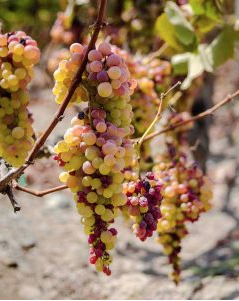
BRANDY FROM PERU
Spanish colonists introduced Spanish grapes, made wine, and then started distilling, perhaps as early as the late 1500s. The spirits were first used as fortification material (to keep wine from spoiling when you shipped it, which is the origin of port and madeira), but pisco is now a brandy recognized as a world- class spirit. A Peruvian pisco was named best distilled spirit in the world at Concours Mondial in Brussels in 2011.

Pisco’s traditional production methods are regulated by the Peruvian government. Like mezcal in Mexico, the spirit has significant cultural and social meaning among indigenous Peruvians. Along with llamas, cotton, certain indigenous ceramics and silver jewelry, and the lucuma tree, pisco is by law treated as an important manifestation of Peruvian culture. The photo is the Vinas de Oro distillery.

By government regulation, Peruvian pisco is single-distilled on copper potstills and must be bottled at still proof: no dilution. No additives are allowed, and the spirit must rest for 3 months in glass, stainless steel, “or any other material which does not alter its physical, chemical or organic properties” before bottling. It is never aged. This makes Peruvian pisco one of the most artisanal and unadulterated of spirits

Only eight grape varietals can be used for Peruvian pisco, all of them derived originally from European stock. The five denominated growing regions, all of them coastal valleys, are arid and hot, and the grapes tend to be sweet. There are two classes: aromatic and non-aromatic. Pisco made from the latter are a unique experience. The photo is the aromatic Italia, a cross between the Negra Criolla (California’s Mission grape) and the Mollar, both originally Spanish varietals.
Production of what the Chileans label pisco is not regulated, and there is a lot of mediocre column-distilled stuff. There are excellent Chilean piscos, but the Peruvians do not allow anything made outside Peru to be labeled as pisco on their market; the Chileans do the same to Peruvian pisco. People on both sides have strong feelings about the issue.